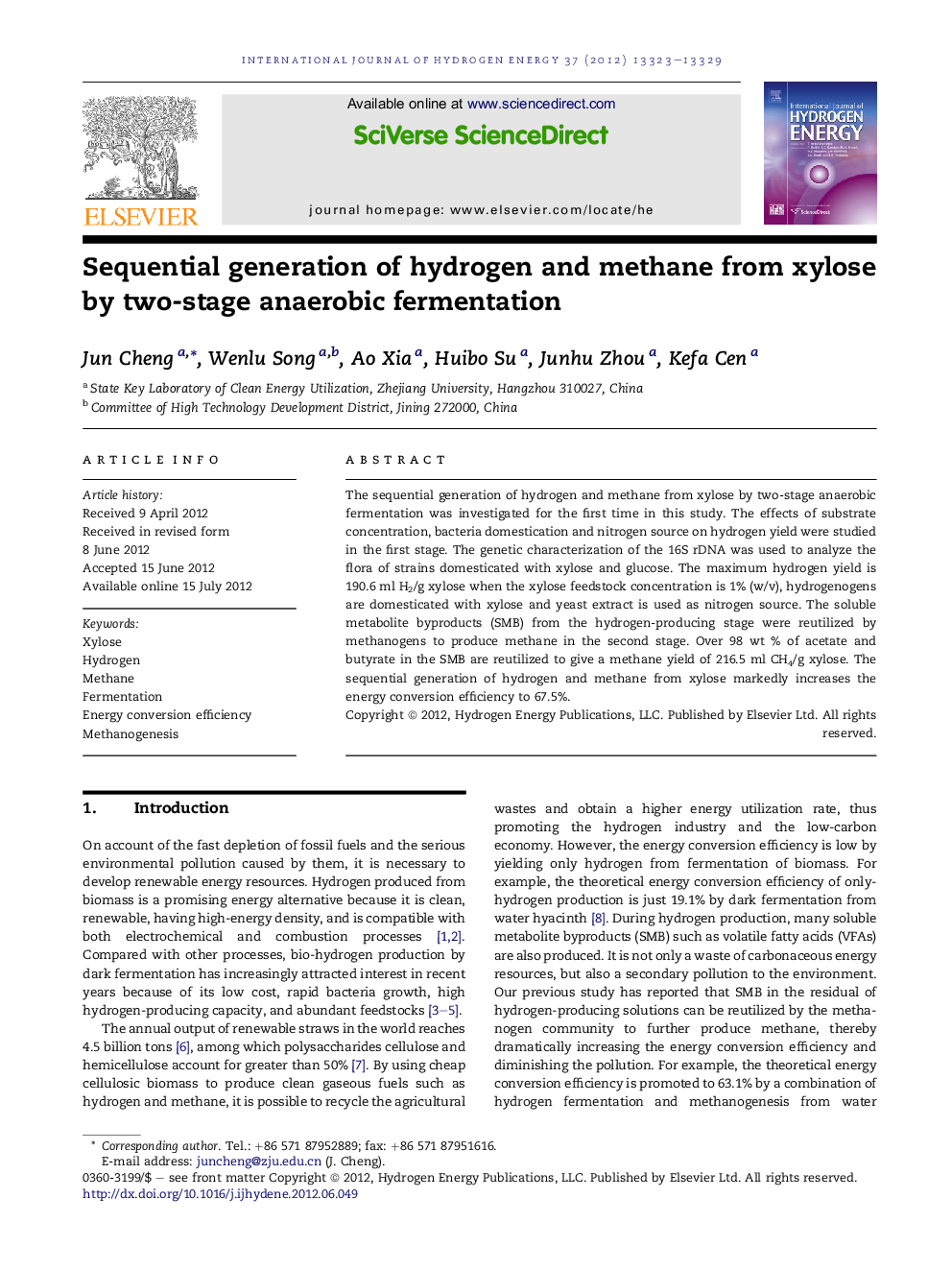| Article ID | Journal | Published Year | Pages | File Type |
|---|---|---|---|---|
| 1282226 | International Journal of Hydrogen Energy | 2012 | 7 Pages |
The sequential generation of hydrogen and methane from xylose by two-stage anaerobic fermentation was investigated for the first time in this study. The effects of substrate concentration, bacteria domestication and nitrogen source on hydrogen yield were studied in the first stage. The genetic characterization of the 16S rDNA was used to analyze the flora of strains domesticated with xylose and glucose. The maximum hydrogen yield is 190.6 ml H2/g xylose when the xylose feedstock concentration is 1% (w/v), hydrogenogens are domesticated with xylose and yeast extract is used as nitrogen source. The soluble metabolite byproducts (SMB) from the hydrogen-producing stage were reutilized by methanogens to produce methane in the second stage. Over 98 wt % of acetate and butyrate in the SMB are reutilized to give a methane yield of 216.5 ml CH4/g xylose. The sequential generation of hydrogen and methane from xylose markedly increases the energy conversion efficiency to 67.5%.
► Hydrogenogens by xylose domestication were characterized using 16S rDNA analysis. ► Metabolite byproducts from H2 production are reused to produce CH4 by fermentation. ► Cogeneration of H2 and CH4 from xylose increases energy conversion efficiency.
